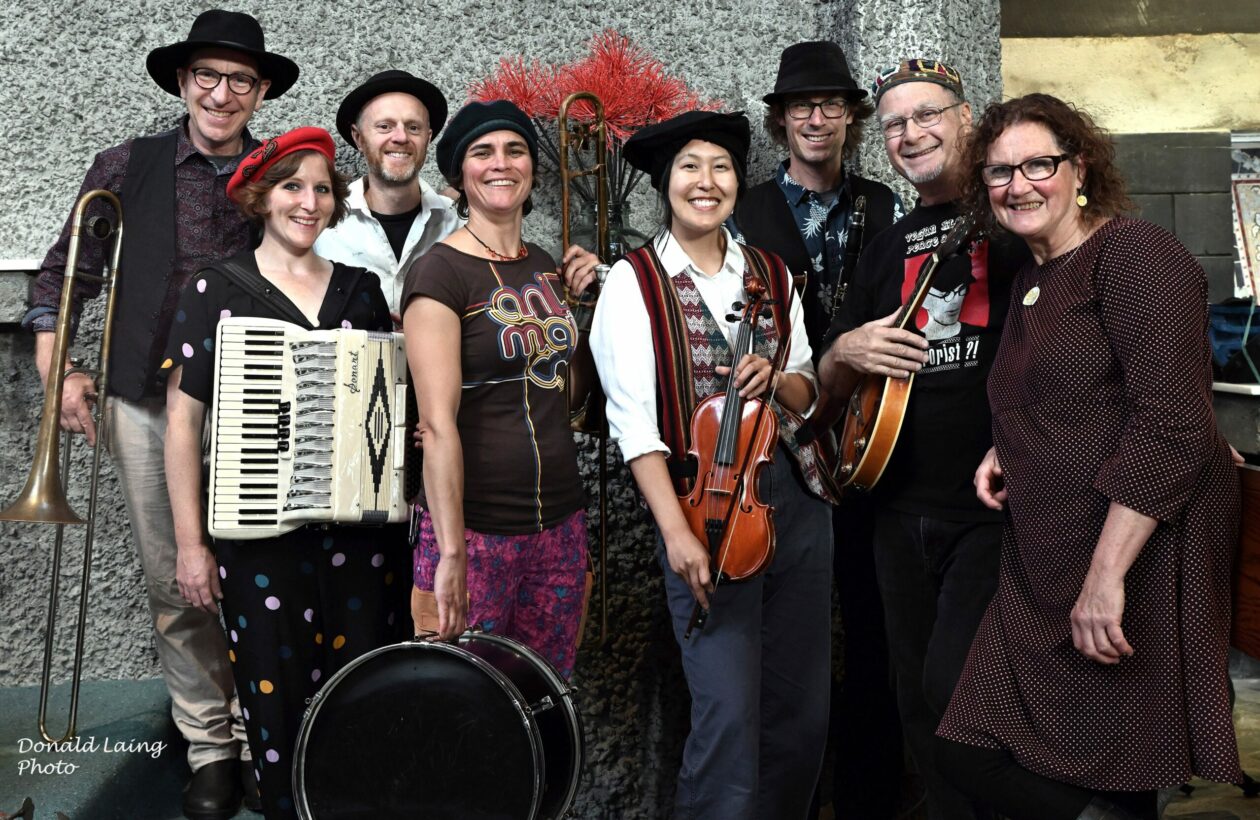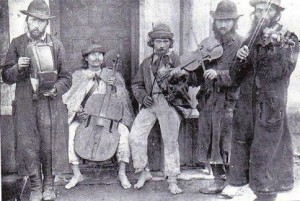Klezmer (composed of the Hebrew words kley and zemer meaning ‘vessels/instruments of song’ or more freely translated ‘musical instrument’) is an engaging style of world/folk music born out of the Yiddish/Jewish culture of eastern Europe in the 1800s and 1900s. Klezmer musicians were the itinerant fringe dwellers in the Jewish shtetl or ghettos (made famous by the musical ‘Fiddler on the Roof’) in the Pale of Settlement (from Germany , Poland Hungary, Romania eastward through Belarus , the Ukraine and Russia ) whoplayed the soundtrack to Jewish festivals and celebrations. Klezmer music was a key element of every Jewish wedding.
The musicians (klezmorim – as they were called) were not highly regarded in the shtetl as they were often irreligious and secular, couldn’t read or write music, and hung out with, drank and played with Gypsies. They often sang for their supper (and schnapps!) and were frequently paid by the song.
Klezmer music strives to evoke the sound (and joys and sorrows!) of the human voice, and its melodies and stylings originated in Jewish liturgical music. There are a number of musical forms of Klezmer , ranging from free-flowing improvisational Doinas , to syncopated-beat Bulgars , and joyous celebratory Freylachs for dancing. Most klezmer songs are in the Yiddish language, and tell poignant and humorous slice-of-life stories of life in the ‘old country’ as well as the travails of adapting to life in America (as in Die Grine Kuzine or ‘Green Cousin’). The Jews who emigrated to America in the 1880s to early 1900s brought klezmer music with them. In the New World , klezmer was heavily influenced by early jazz and then swing, and continues to evolve. There has been a worldwide revival of klezmer music since the 1980s. Nowadays klezmer enjoys tremendous popularity with many festivals each year in the US , Canada and Europe . The Klezmer Rebs play an eclectic mix of up-beat ethnic dance and wedding music, along with a few familiar and english language tracks. Live performances feature a range of klezmer tunes from the 1890’s to the present including Tum Balalaika (Play the balalaika) Ot a Zoy (Just like that), Ale Brider (All Brothers), a Russian song or two – Ochi Chornya (Dark eyes’), and some familiar English language tunes such as ‘Those were the days’, Ba meir bis du shein, Dona dona, and a cover of the Jews Brothers song ‘She’s my baby’. Indeed the Jews Brothers, who brought live Klezmer music to New Zealand, were one of the inspirations for the Klezmer Rebs. The Klezmer Rebs formed as a breakaway from another group, Sam Gezentsvey’s Klezmer Orchestra which was far too structured for our rebelious band members, hence the ‘Rebs’. Reb in Yiddish is also term of respect accorded to someone learned. |

